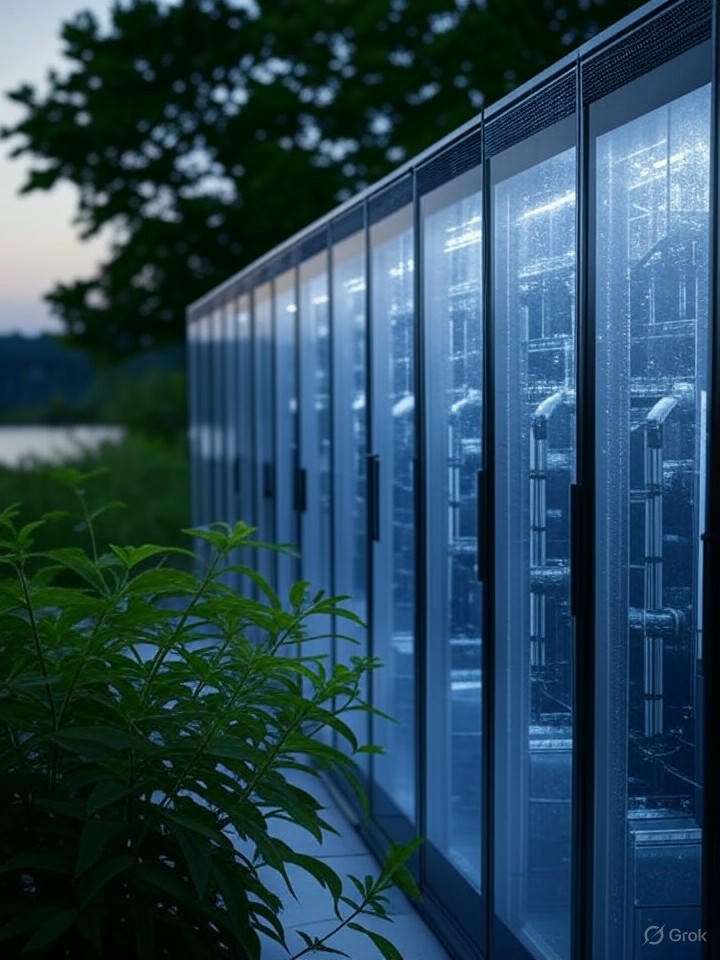UPDATE: New reports confirm the escalating urgency surrounding the AI water crisis, as tech giants like Google and Microsoft ramp up data center operations that consume massive amounts of water. A recent study from Nature Sustainability projects that U.S. AI servers could use up to 1.1 billion cubic meters of water annually by 2030, equating to the daily water consumption of 10 million Americans.
Despite alarmist headlines, some experts argue that the narrative around the so-called AI water crisis is exaggerated. Andy Masley, in his Substack newsletter, claims much of the water used in data centers evaporates and returns to the water cycle, rather than being permanently consumed. “The AI water issue is fake,” he asserts, emphasizing that this evaporation contributes to rainfall elsewhere, contrasting with agricultural practices that deplete aquifers.
As AI technologies demand more computational power, data centers increasingly rely on water for cooling. A report by NPR highlighted that generative AI has driven significant increases in water usage among major tech firms, with projections indicating that U.S. data centers could account for 12% of the nation’s electricity consumption by 2028.
However, Masley points out that in regions like the Midwest, where Microsoft operates, water resources are ample, and evaporation rates are lower. Critics still raise concerns about localized impacts, with the United Nations Environment Programme (UNEP) warning that data centers contribute to toxic e-waste and often rely on fossil fuels, exacerbating climate issues.
Amidst this debate, social media discussions are intensifying. Users on X (formerly Twitter) express fears that AI could consume up to 1.7 trillion gallons of water globally by 2027. Yet, Masley counters these claims, clarifying that the majority of water used is returned to sources after use.
In drought-prone areas, the situation becomes critical. A report from Food & Water Watch forecasts that AI could consume electricity equivalent to that used by 28 million households by 2028, potentially straining water supplies in locations like Arizona. However, Masley cites cases like Microsoft’s data centers in Noord-Holland, Netherlands, which operate in water-rich regions.
As international scrutiny increases, measures are being proposed to mitigate the impacts of AI on water resources. The pending Artificial Intelligence Environmental Impacts Act of 2024 aims to establish standards for assessing AI’s ecological footprint, including its water usage. Masley views this legislation as a necessary step but warns against overregulation that could hinder innovation.
In response to rising concerns, tech companies are committing to replenishing more water than they consume by 2030. Both Google and Microsoft have announced investments in watershed projects aimed at sustainability. A recent study from Cornell University suggests that strategies such as locating data centers in cooler climates can help reduce evaporation needs.
As the conversation evolves, Masley maintains that framing AI as the primary culprit distracts from larger issues, like agriculture, which consumes 70% of global freshwater. He argues that with proper management, AI’s growth can be sustainable, potentially leading to innovations that enhance water conservation.
The urgency of addressing these water concerns cannot be overstated. As AI technologies continue to advance, their environmental impact will be a critical topic for both industry leaders and policymakers. The ongoing debate highlights the need for balanced perspectives, weighing the benefits of innovation against the essential goal of environmental sustainability.
As the situation develops, stakeholders will be watching closely to see how the tech industry adapts to these challenges and what regulatory measures will emerge to ensure responsible water usage in the age of AI.
